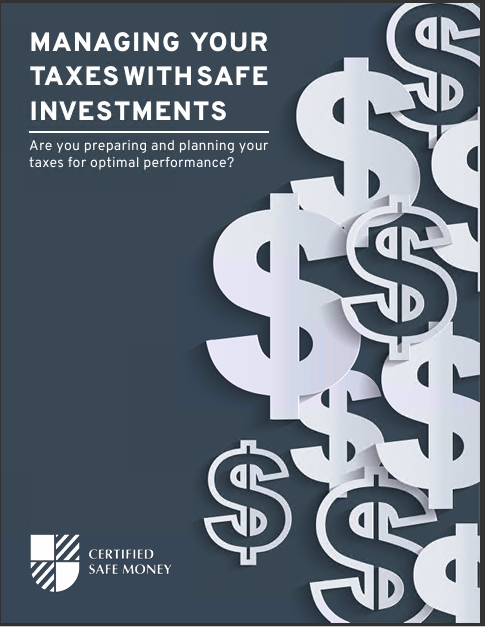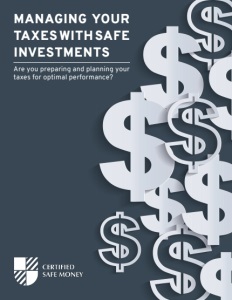Key Takeaways
-
Indexed Universal Life Insurance (IUL) combines life insurance protection with investment opportunities linked to market indices.
-
While IUL policies offer tax advantages, understanding their complexities is crucial to avoid unexpected tax liabilities.
How Indexed Universal Life Insurance Works—Simplified
Indexed Universal Life (IUL) insurance might sound complicated, but let’s break it down simply. Imagine combining the stability of life insurance with the growth potential linked to the stock market. With IUL, your policy’s cash value grows based on the performance of a market index like the S&P 500. The good news? You aren’t directly investing in the market, so your policy is protected from losses even if the market dips.
Here’s the kicker: Your policy comes with a cap and floor. The floor means your policy’s cash value never dips below a certain level—typically 0%. On the flip side, there’s also a maximum rate, or cap, limiting how much you can earn in booming markets. Typically, caps range from 8% to 12% annually.
The Big Appeal: Tax Advantages of IUL
One of the standout reasons people choose IUL is the potential for tax benefits. Understanding exactly what these tax benefits entail helps you maximize your policy’s advantages.
Tax-Free Growth and Withdrawals (When Done Correctly)
The primary tax perk is the tax-deferred growth of your policy’s cash value. This means your money can compound and grow without immediate taxation. Unlike traditional savings accounts or investment products, you don’t pay taxes annually on the gains.
Even better, when handled carefully, you can withdraw from your cash value tax-free. By taking loans against the cash value or making strategic partial withdrawals, you can access funds without paying immediate taxes. Be cautious, though—missteps here can trigger taxes and even penalties.
Death Benefit is Usually Tax-Free
Another huge plus is that your policy’s death benefit generally passes to your beneficiaries income-tax-free. This means your loved ones receive the entire amount without Uncle Sam taking a significant chunk.
4 Essential Facts You Need to Understand About IUL and Taxes
To make the most of an Indexed Universal Life policy, you must grasp the finer details about its tax implications. Here are four critical points you absolutely need to understand:
1. Mismanagement Can Lead to Unexpected Taxes
It’s easy to get excited about the tax advantages and overlook how things could go sideways. If your policy lapses or becomes a Modified Endowment Contract (MEC), those enticing tax perks quickly vanish. A policy becomes a MEC when premiums exceed IRS limits, turning your favorable policy into something resembling a taxable investment.
If that happens, withdrawals become taxable on a “last in, first out” (LIFO) basis, meaning any gains are taxed first, potentially at your regular income tax rate. Plus, if you’re under 59½, a 10% IRS penalty could apply on those taxable gains.
2. Premium Limits Exist—Know Them Well
The IRS places strict rules on how much money you can put into your policy without losing favorable tax treatment. Premiums exceeding guidelines known as the “7-Pay Test” trigger MEC status. Simply put, if you put too much money into your IUL within the first seven years, you risk changing the policy’s tax benefits entirely.
This doesn’t mean you can’t add more money; it just means you must plan contributions carefully. Work with your agent or advisor to stay well within IRS guidelines, maintaining the policy’s advantageous tax status.
3. Interest Rate Caps Can Limit Your Growth—But Not Your Taxes
Remember those caps mentioned earlier? While they protect you from market downturns, they also limit your upside potential. Even though your returns might be capped around 10%, any borrowed amount exceeding what you’ve paid in premiums can trigger taxes if the policy lapses.
Let’s say you borrowed heavily from your policy’s cash value. If it runs low and lapses, the IRS considers any excess borrowed amount as income. You then owe taxes on the amount borrowed beyond your premiums paid. Maintaining a healthy cash value is essential to avoid such tax traps.
4. IUL Can Complement Retirement Income—But Watch Your Strategy
Many policyholders view their IUL policy as supplemental retirement income. When executed thoughtfully, this approach provides tax-free loans to supplement traditional retirement accounts like 401(k)s or IRAs.
But there’s a delicate balancing act. Withdrawing too aggressively or too early can risk policy lapse, taxation, and penalties. To optimize your retirement strategy, structure your distributions carefully, and consult regularly with your financial advisor.
Avoiding Common Tax Pitfalls with IUL
Indexed Universal Life Insurance isn’t a “set it and forget it” financial instrument. Proper management is vital to avoid unintended tax consequences. Here’s how you can navigate the common pitfalls:
Regular Policy Reviews
Conduct regular reviews—ideally annually or every two years—with a financial professional. Your goal is to monitor the policy’s cash value, ensuring it’s sufficient to sustain withdrawals or loans without triggering tax events.
Avoid MEC Status at All Costs
Clearly understanding the MEC rules is crucial. Once a policy is classified as a MEC, it can’t be reversed. Plan premium payments strategically, especially during the policy’s initial seven-year window, to keep your tax advantages intact.
Mindful Loan and Withdrawal Practices
If using your policy’s cash value, always maintain sufficient funds within the policy to avoid unintended lapses. Withdraw carefully, keeping track of amounts taken versus premiums paid, ensuring you never inadvertently trigger taxation.
How to Decide If Indexed Universal Life is Right for You
Indexed Universal Life Insurance might sound attractive with its combination of investment-like growth and insurance protection, but it’s not for everyone. Here’s what to consider:
-
Your financial goals: If tax-efficient growth, income replacement, or legacy planning is your priority, IUL could be a solid option.
-
Risk tolerance: IUL isn’t directly invested in stocks, but market-linked returns fluctuate within policy limits. Ensure you’re comfortable with capped growth and policy costs.
-
Long-term commitment: IUL works best for those willing to commit for at least 10-20 years, providing ample time for cash value accumulation and minimizing policy expenses.
Consider all these factors carefully before diving in.
Mastering IUL Tax Strategy
Understanding how taxes impact your Indexed Universal Life policy is a critical step in making this financial instrument work to your advantage. Proper management can mean decades of tax-free growth, a substantial tax-free death benefit, and supplemental retirement income.
Indexed Universal Life policies aren’t inherently good or bad—they’re tools requiring careful planning and management. By being proactive and informed, you’ll avoid unpleasant tax surprises and maximize benefits.
Ready to Make Smart Financial Moves?
Indexed Universal Life Insurance can play a powerful role in your financial plan, offering unique tax advantages if handled correctly. Talk to a financial professional today to ensure you’re getting the most from your policy and steering clear of common pitfalls.











